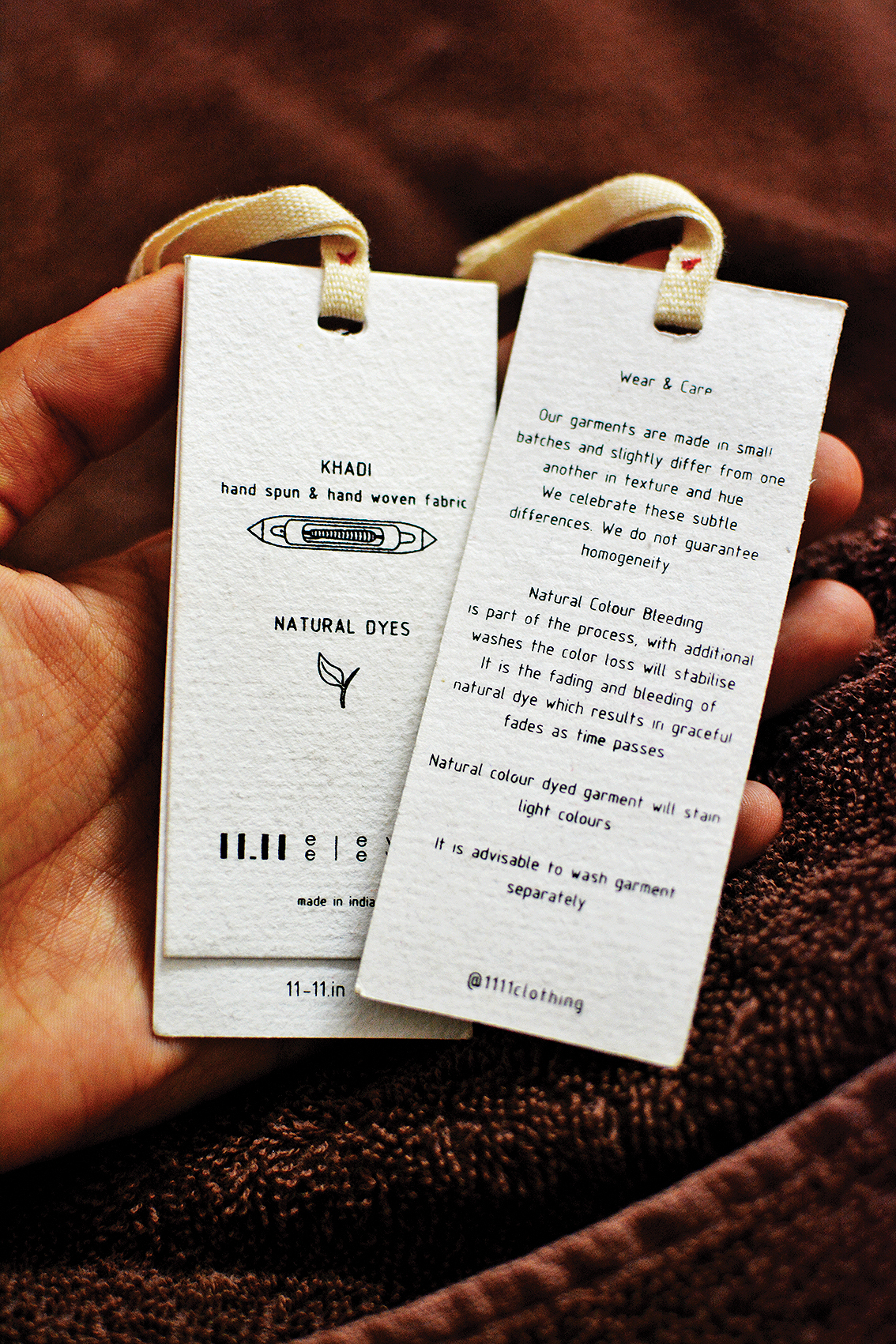
I don’t know which part of our brain decides on the clothing choices we make, but I can comfortably say that mine was always inclined towards big silhouettes in colours that would make people mistake me for a stone, a wall or Nordic homeware. Being in the proximity of Vogue India in my early years at NIFT Kangra helped me fall for homegrown brands like Péro and 11.11, while the country was crazy about Sabyasachi and Tarun Tahiliani. And now after exactly seven years, the market situation is such that even Myntra and Ajio are selling everything that is ‘khadi’ or ‘sustainable.’
The love for natural and basic clothing, coupled with the understanding of environmental issues set up by mass manufacturing has inspired many folks like me to choose alternatives that are sustainable. Campaigns like ‘Make in India’ and the photos of poor craftsmen circulating online have further set the tone for us to opt for the indigenously produced merchandise that supports Indian weavers and artisans.
Extensively promoting sustainable practices through writing has in the process enabled me to meet relevant people and learn more about sustainability, ensured through fashion. Be it swapping of clothes curated by Moane Rosello (which is essentially a European concept), repairing our beloved separates by our local tailors (so beautiful and Indian!), the business of second-hand clothing in markets like Sarojini Nagar and kids’ wear that grows to fit a child from the age of nine months to four years — all of these initiatives are a step towards a planet that is less laden with exhausted natural resources and discarded clothes.
A set of seven menswear shirts by 11.11 that I bought at about Rs 600 each (being sold at 80% discount with original MRP between Rs 3,500 to Rs 4,500) have been my wardrobe staples since January 2018. They are made with hand-woven textiles with hand-made details which a diehard fan could not miss at a price like that. I have worn them to office, meetings, interviews, trips to villages, family get-togethers and any other place I visited in the last year and a half. Although the decision to buy these shirts was entirely for their beauty, recent events in my life have motivated me to make a conscious choice when it comes to clothing. At that, these shirts are a total hit, the best one can find in terms of both quality and aesthetic. Tuck in, tuck out. Pair with denim or culottes. The sombre colours like ivory, chocolate, charcoal and indigo are to die for.
Shopping for clothes has been a very personal exercise for me. I have in the past, from what I remember, been blissful about the clothes that are sent to my room after a cycle of wash and iron. However, recent conversations (mind you, multiple small discussions/mentions over a period of four months) with a close friend have sensitised me towards how others respond to our everyday fashion, the people we meet at work and other acquaintances. So clothing can be chosen in a way to be a doer, to motivate oneself to take control of things, small or big in daily life. My 11.11 shirts have aged well and can sustain me another couple of years, but being produced through natural means, they are not in a position to get me overgenerous preferential treatment. As someone who has never been bothered about the element of ‘others’ and how they reciprocate visual stimuli (such as clothing) with goodwill, positive gestures and support —using clothing to my advantage is still a new concept, mostly a corporate characteristic, that I am yet to try. To give it an attempt, I have bought a good load from Zara’s new collection. It hurts when I write this when I know what else I could have done. However, it is a big bad world and I must be smart enough to be both sustainable and an executor.
To conclude this thought, I would like to press again on the environmental hazards of clothing even when it’s designed to be worn multiple times, unlike a lot of plastic that we use. The fashion industry is considered the second most polluting industry for its hazardous discharge into air, water and land. With little clarity over what’s truly sustainable, it is indeed difficult to make a choice. Something that is sustainable for the soil may not be so for the farmer. Then there is sustainability for the people who make clothes, their lifestyle and working conditions.
There are many small things we can do to secure the environment. We must follow the Fashion Revolution on all social media platforms to educate ourselves on how our clothing choices affect ecology at large. This is because I still come across people who are big-time hoarders and do not know much about the ill effects of fashion business on the environment and are shocked when they learn about it. Yes, there are brands we can choose that may be less polluting but I think we haven’t done enough about and must look into ways to elongate the life/love for clothes we already own. Could be something as simple as using cold water to wash our clothes or a little adventurous one: asking 11.11 for a re-fashioning service for my shirts that I would love to wear again.
Two people were injured after a DTC bus allegedly driving on the wrong side collided…
Delhi Police arrest alleged kingpin of fake medicines racket; seize material for over 50,000 spurious…
A Hindi adaptation of Ibsen’s Ghosts, Pret probes the clash between rigid tradition and rational…
Delhi CM Rekha Gupta says 'No PUC, No Fuel' may cause inconvenience, but is vital…
Court says repeated, unpursued petitions amount to misuse of legal process; fines litigant Rs 50,000…
Former cricketer says managing Bumrah’s workload is crucial to keep the high-pace fast bowler match-fit